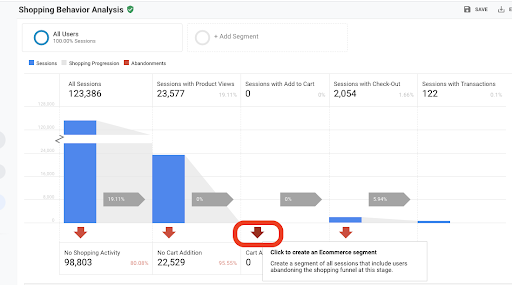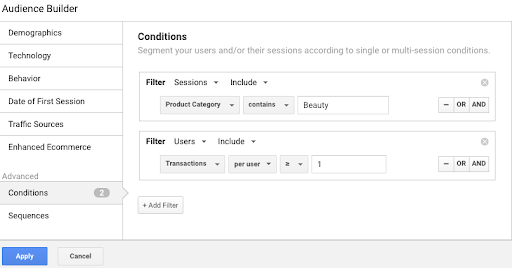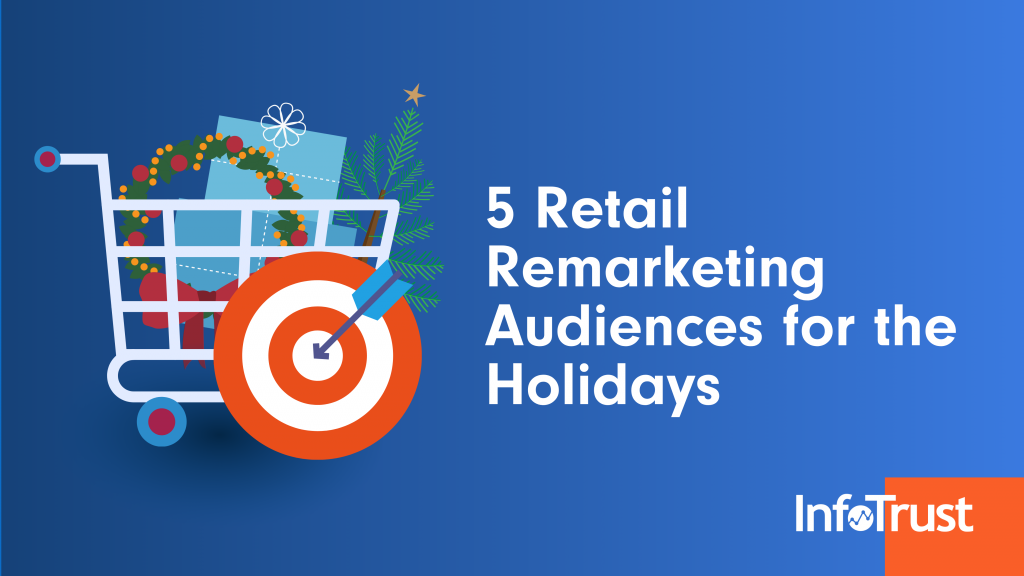Holiday campaigns are top-of-mind for most marketers this time of year, and tying results to business objectives is key to success. Each customer interaction with your site can provide insights into their needs and expectations. Understanding and acting on these insights can help to drive immense value for your business—all while improving the customer experience.
Typically, the use of website data is geared towards lower-funnel activity, but you can find connections to upper- and middle-funnel activity, such as cross-selling new products to existing customers and creating general brand awareness to reach new prospects, as well. Activate these insights by utilizing data from Google Analytics 360 and create audiences around their interactions with your site. Then, show them targeted ads through Google Ads and Google Marketing Platform.
To find connections between marketing funnels and your data (to build retail remarketing audiences), map each stage of the customer journey to an audience within your analytics data.
- Awareness: Raise awareness and visibility using recommended audiences in analytics
- Acquisition: Convert users from browsers to customers with machine-learning-based audiences, event tracking, and enhanced eCommerce reporting.
- Loyalty: Keep customers engaged with audiences around your custom dimensions (like registering for an e-newsletter) or utilize a data import from your CRM.
The examples below are shown in Google Analytics 360, but all can be executed in other platforms, as the concepts still apply.
5 Retail Remarketing Audiences for the Holidays
The 5 audiences for retail businesses can help give your campaigns that extra boost for holiday sales:
1) New Visitors Audience: Create segments based on your users by defining a custom segment, and then import them into Audiences. One possible audience segment of interest for holiday campaigns this year is “new visitors” who found you during the first few months of the COVID-19 pandemic.

2) Shopping Abandoners Audience: Create custom segments from the shopping stages report, focusing on those that abandoned items in the shopping cart. These customers were close to purchasing; why not create a reminder of your holiday sales and encourage them to complete the transaction? This segment can be automatically created by clicking on cart abandoners. Here is an example from the Google Merchandise Store:

3) User Map Audience: Use the custom report below (copy the link) to identify the highest revenue cities from September and October, then create an audience geared to those that visit your site from the surrounding area. Below is again an example from the Google Merchandise Store):

4) Cross-Sell Audience: Did you know which product on your site is most popular (in terms of sales)? Which product categories are gaining the most revenue? Product performance reports can give you deeper insight into product categories that are performing well. Build an audience with this product category/product type and create a campaign for them around related products users might be interested in purchasing.

5) Smart List Audience: New users that come to your site, or those that are just browsing, provide a good addition to brand awareness or visibility remarketing campaigns. Create this audience using the GA Smart list. Smart lists automatically identify those likely to convert by harnessing the power of machine learning. Create this audience by selecting Smart List under the recommended audiences. We recommended A/B testing with this audience list on your advertising campaigns.

Google Analytics 4 (the newest version of GA) allows standard audiences, like Smart Lists, to be leveraged even more than before, as there is more machine learning baked into the reporting and data collection model.
Integrating with DV360, Google Ads and Display Network
After creating your audiences in Google Analytics 360, the final step is to integrate them with your advertising platforms. This can be done in the admin panel of Google Analytics 360 (within the audience model). More information on this can be found in our previous blog post.
Integrating these remarketing audiences into your advertising platform will likely result in:
- Improved targeting
- Enhanced behavior metrics
- More robust reporting
For further information on building audiences in Google Display & Video 360, check out this previous InfoTrust post. Campaign Manager is also a great tool for building audiences; if you’re using CM, have a look here.
In conclusion, if you’re already taking advantage of website analytics/visits data—why not use this to your advantage by building holiday remarketing audiences? Using Google Analytics 360 reporting and audience builder can create operational efficiencies and help you achieve business objectives.


